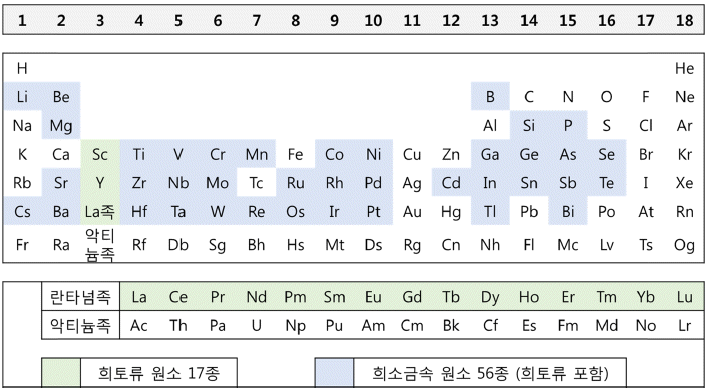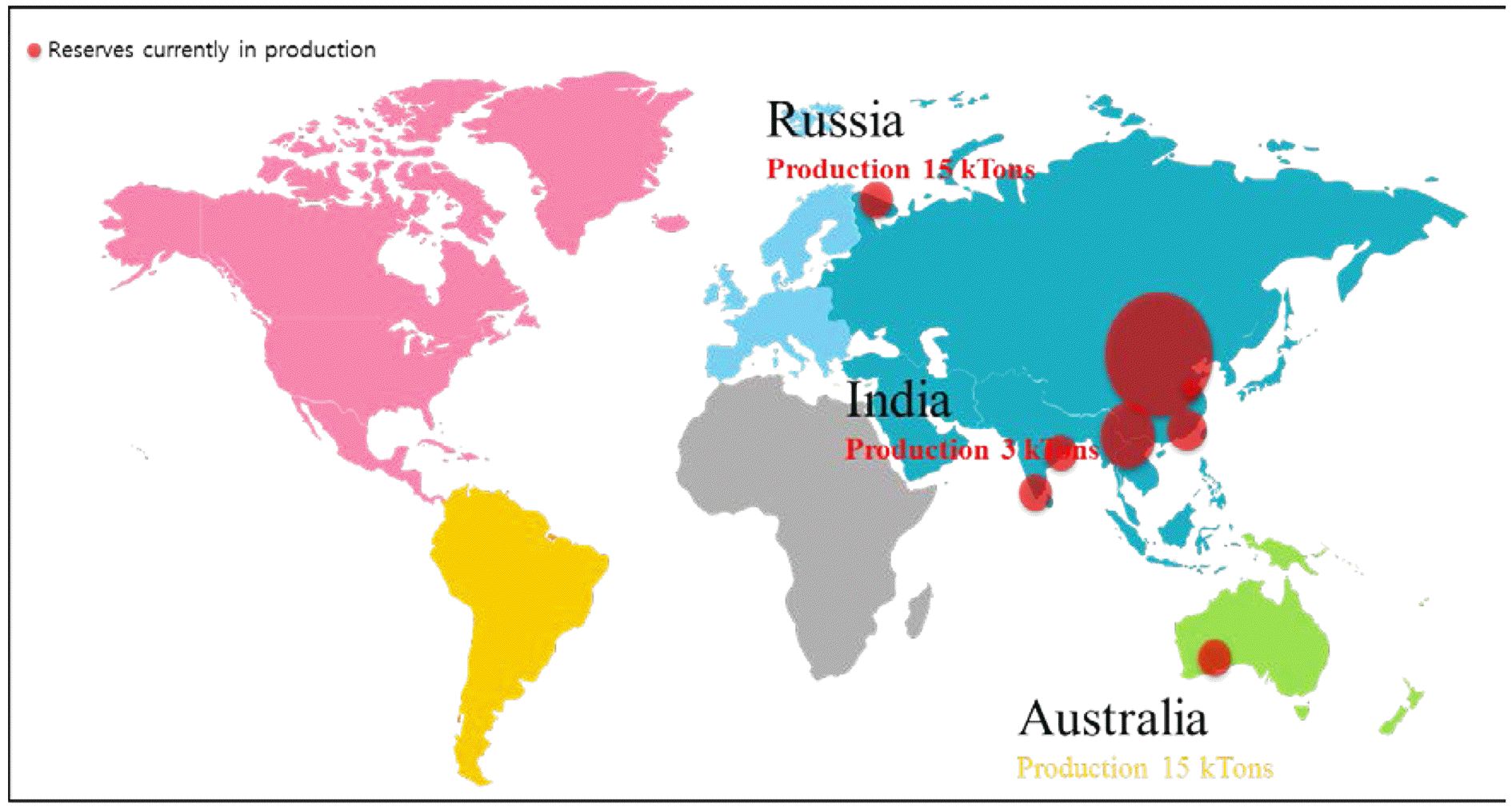Search
- Page Path
- HOME > Search
- [Korean]
- Standardization of Rare Earth Elements in ISO TC 298 and Korea's Standardization Strategy
- Nu Si A Eom, Sardar Farhat Abbas, Haq Muhammad Aneeq, Rasheed Mohammad Zarar, Mi Hye Lee, Bum Sung Kim, Taek-Soo Kim, Bin Lee
- J Korean Powder Metall Inst. 2019;26(3):251-257. Published online June 1, 2019
- DOI: https://doi.org/10.4150/KPMI.2019.26.3.251

- 827 View
- 3 Download
-
 Abstract
Abstract
 PDF
PDF Since the ISO decided to deal with rare-earth elements at the 298th Technical Committee (TC) in 2015, Korea has participated in four plenary meetings and proposed four standards as of June 2019. The status of ISO TC 298, the standards covered by the TC, and the standardization strategies of Korea are summarized. Korean delegations are actively engaged in WG2, which deals with recycling, proposing four standards for fostering the rare-earth recycling industry. However, the participation of domestic experts is still low compared with the increase in the number of working groups and the number of standards in TC 298. The aim of this article is to summarize the current status of ISO international standards related to rare-earth elements, to encourage relevant experts to participate in standardization, and to develop international standards that accurately reflect the realities of the industry.
- [Korean]
- Trends and Implications of International Standardization for Rare Earths
- Sardar Farhat Abbas, Sang-Hyun lee, Bin Lee, Bum-Sung Kim, Taek-Soo Kim
- J Korean Powder Metall Inst. 2018;25(2):165-169. Published online April 1, 2018
- DOI: https://doi.org/10.4150/KPMI.2018.25.2.165

- 654 View
- 5 Download
- 2 Citations
-
 Abstract
Abstract
 PDF
PDF Rare earth elements (REEs) are considered to be vital to modern industry due to their important roles in applications such as permanent magnets, automobile production, displays, and many more. The imbalance between demand and supply of REEs can be solved by recycling processes. Regarding the needs of industry and society, the International Organization for Standardization, Technical Committee 298 (ISO/TC298) Rare Earths has been recently launched for developing international standards on rare earth elements. In accordance with the suggestion of its constituents, it is tentatively working to develop the appropriate standards under five working groups (WG) on terms and definitions (WG1), element recycling (WG2), environmental stewardship (WG3), packaging, labelling, marking, transport, and storage (WG4), and testing analysis (WG5). The scope and structure of ISO/TC298 on the topic of rare earths is discussed in this document.
-
Citations
Citations to this article as recorded by- Synthesis and magnetic properties of Sm2Co17 particles using salt-assisted spray pyrolysis and a reduction-diffusion process
Tae-Yeon Hwang, Jimin Lee, Min Kyu Kang, Gyutae Lee, Jongryoul Kim, Yong-Ho Choa
Applied Surface Science.2019; 475: 986. CrossRef - Worker Safety in the Rare Earth Elements Recycling Process From the Review of Toxicity and Issues
Seo-Ho Shin, Hyun-Ock Kim, Kyung-Taek Rim
Safety and Health at Work.2019; 10(4): 409. CrossRef
- Synthesis and magnetic properties of Sm2Co17 particles using salt-assisted spray pyrolysis and a reduction-diffusion process
- [English]
- Microstructural Characterization of Gas Atomized Copper-Iron Alloys with Composition and Powder Size
- Sardar Farhat Abbas, Taek-Soo Kim
- J Korean Powder Metall Inst. 2018;25(1):19-24. Published online February 1, 2018
- DOI: https://doi.org/10.4150/KPMI.2017.25.1.19

- 406 View
- 1 Download
-
 Abstract
Abstract
 PDF
PDF Cu-Fe alloys (CFAs) are much anticipated for use in electrical contacts, magnetic recorders, and sensors. The low cost of Fe has inspired the investigation of these alloys as possible replacements for high-cost Cu-Nb and Cu-Ag alloys. Here, alloys of Cu and Fe having compositions of Cu100-xFex (x = 10, 30, and 50 wt.%) are prepared by gas atomization and characterized microstructurally and structurally based on composition and powder size with scanning electron microscopy (SEM) and X-ray diffraction (XRD). Grain sizes and Fe-rich particle sizes are measured and relationships among composition, powder size, and grain size are established. Same-sized powders of different compositions yield different microstructures, as do differently sized powders of equal composition. No atomic-level alloying is observed in the CFAs under the experimental conditions.
TOP
 kpmi
kpmi


 First
First Prev
Prev


